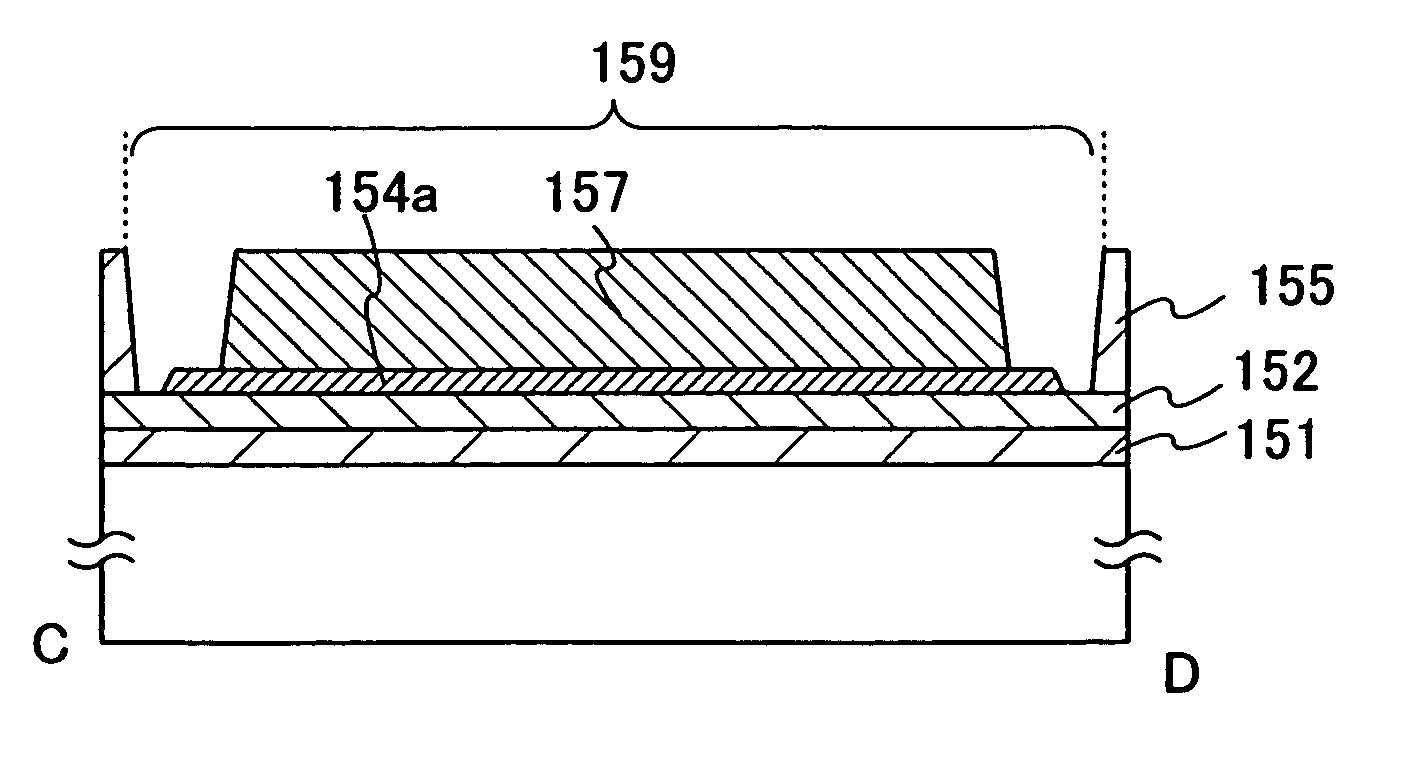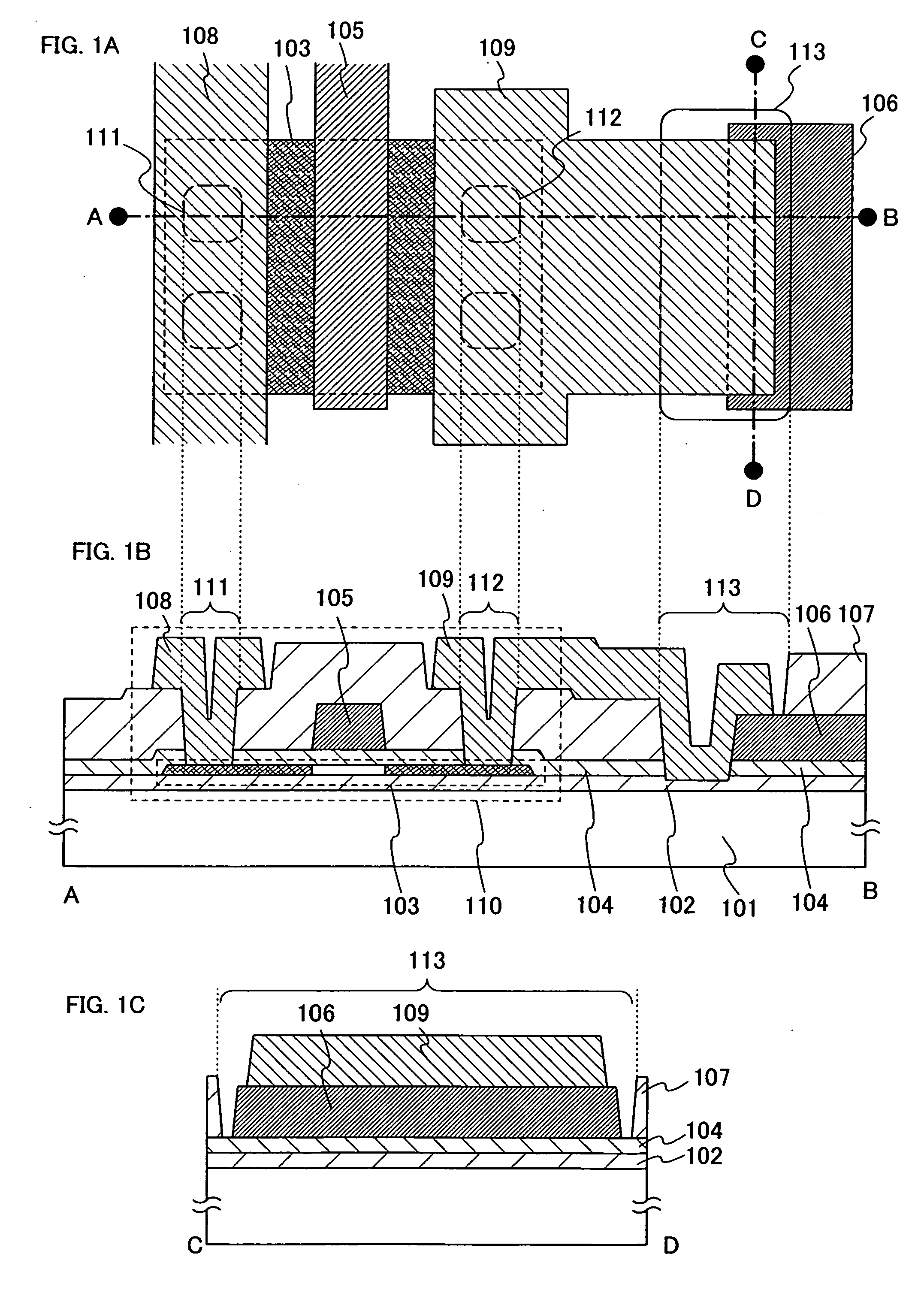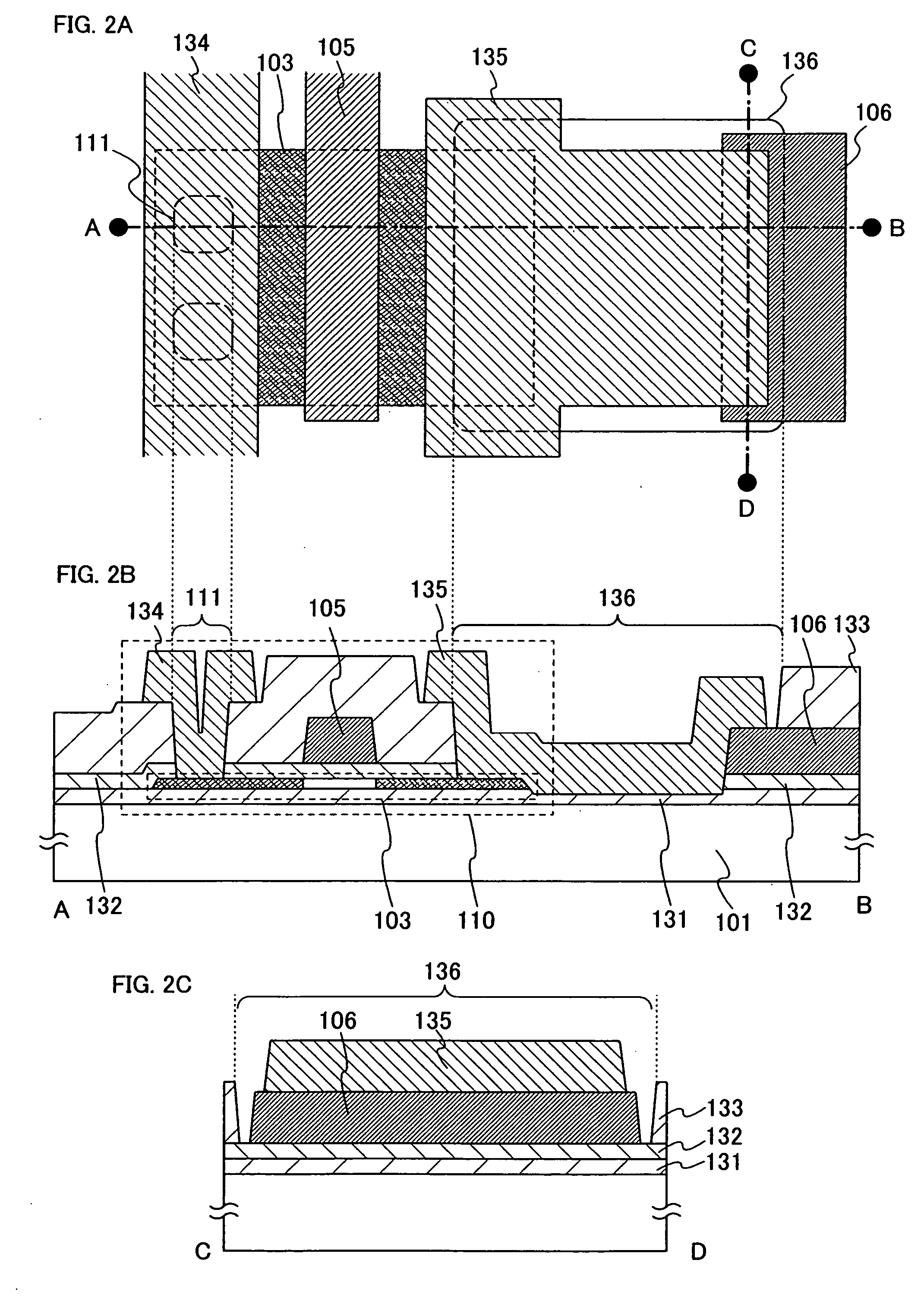Semiconductor device
- Summary
- Abstract
- Description
- Claims
- Application Information
AI Technical Summary
Benefits of technology
Problems solved by technology
Method used
Image
Examples
embodiment mode 1
[0061] This embodiment mode will describe a semiconductor device in which a plurality of conductive layers formed with an insulating layer interposed therebetween are connected to each other inside a contact hole and at least a part of an end portion of one conductive layer is located inside the contact hole. Typically, with reference to FIGS. 1A to 1C, this embodiment mode will describe a semiconductor device which includes a third conductive layer connected to a first conductive layer and a second conductive layer, in which the second conductive layer and the third conductive layer are connected to each other inside a contact hole, in which an end portion of the third conductive layer is located inside the contact hole, and in which the third conductive layer is connected to the first conductive layer and the second conductive layer in different contact holes.
[0062] Here, one of a source region and a drain region of a semiconductor region of a first transistor is used as the firs...
embodiment mode 2
[0097] This embodiment mode will describe a semiconductor device with reference to FIGS. 2A to 2C, which has a third conductive layer connected to a first conductive layer and a second conductive layer. In this semiconductor device, the second conductive layer is connected to the third conductive layer in a contact hole, an end portion of the third conductive layer is located inside the contact hole, and the first conductive layer is connected to the third conductive layer in the same contact hole as the contact hole where the second conductive layer is connected to the third conductive layer.
[0098] Similarly to Embodiment Mode 1, one of a source region and a drain region of a semiconductor region of a first transistor is used as the first conductive layer, a gate electrode of a second transistor is used as the second conductive layer, and a wire for connecting the gate electrode and the one of the source region and the drain region is used as the third conductive layer. The first ...
embodiment mode 3
[0110] Embodiment Mode 3 will describe a semiconductor device with reference to FIGS. 3A to 3C, in which a part of the second conductive layer overlaps with a part of the first conductive layer in Embodiment Mode 2.
[0111] In this embodiment mode, similarly to Embodiment Mode 1, one of a source region and a drain region of a semiconductor region of a first transistor is used as the first conductive layer, a gate electrode of a second transistor is used as the second conductive layer, and a wire for connecting the gate electrode to the one of the source region and the drain region is used as the third conductive layer. The first transistor and the second transistor are thin film transistors.
[0112]FIG. 3A is a top view of the first transistor, and FIGS. 3B and 3C are cross-sectional views taken along lines A-B and C-D of FIG. 3A, respectively. In FIG. 3A, the substrate 101, the insulating layers 102 and 143, and the gate insulating layer 104 which are shown in FIGS. 3B and 3C are omi...
PUM
 Login to View More
Login to View More Abstract
Description
Claims
Application Information
 Login to View More
Login to View More - R&D
- Intellectual Property
- Life Sciences
- Materials
- Tech Scout
- Unparalleled Data Quality
- Higher Quality Content
- 60% Fewer Hallucinations
Browse by: Latest US Patents, China's latest patents, Technical Efficacy Thesaurus, Application Domain, Technology Topic, Popular Technical Reports.
© 2025 PatSnap. All rights reserved.Legal|Privacy policy|Modern Slavery Act Transparency Statement|Sitemap|About US| Contact US: help@patsnap.com



